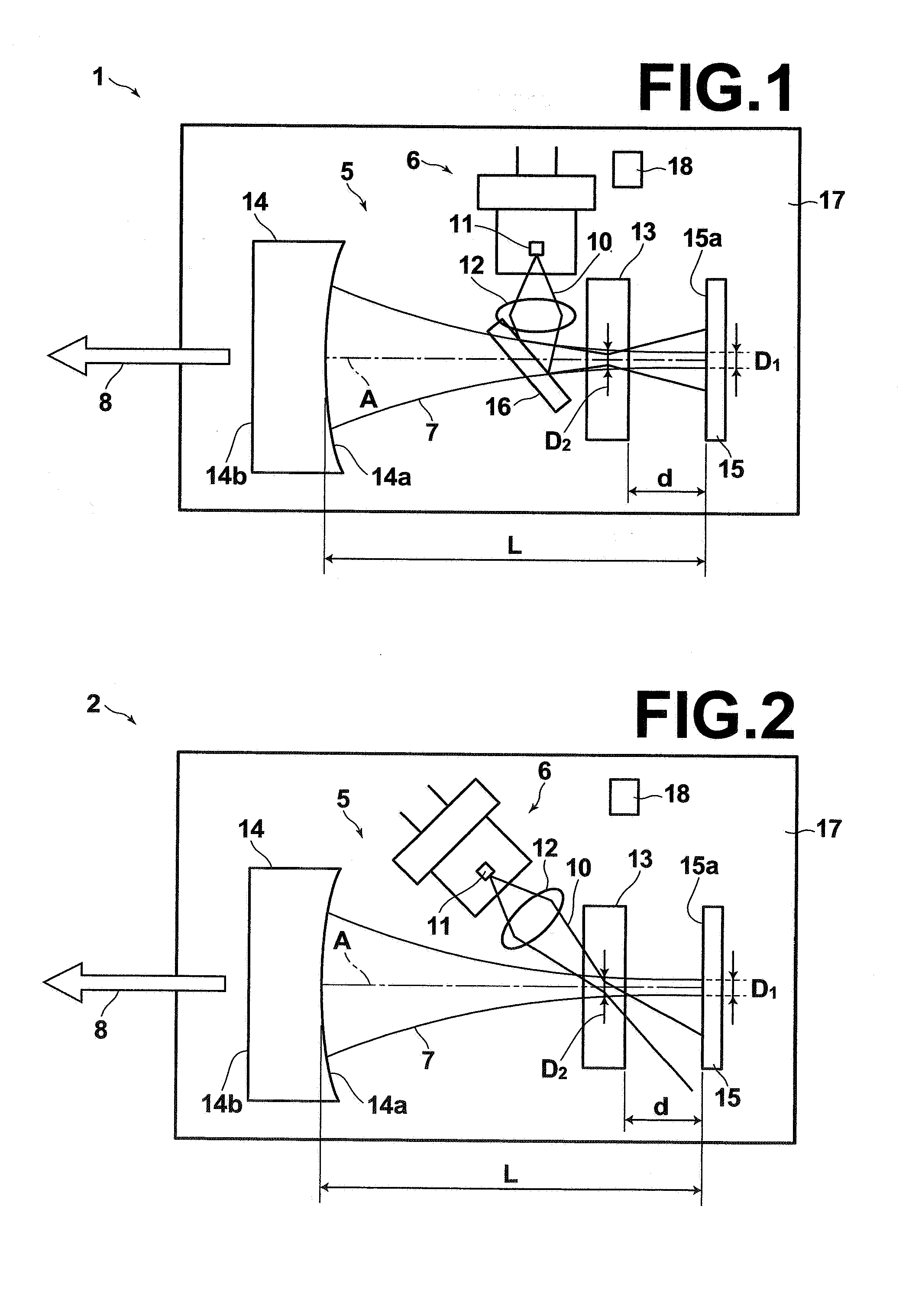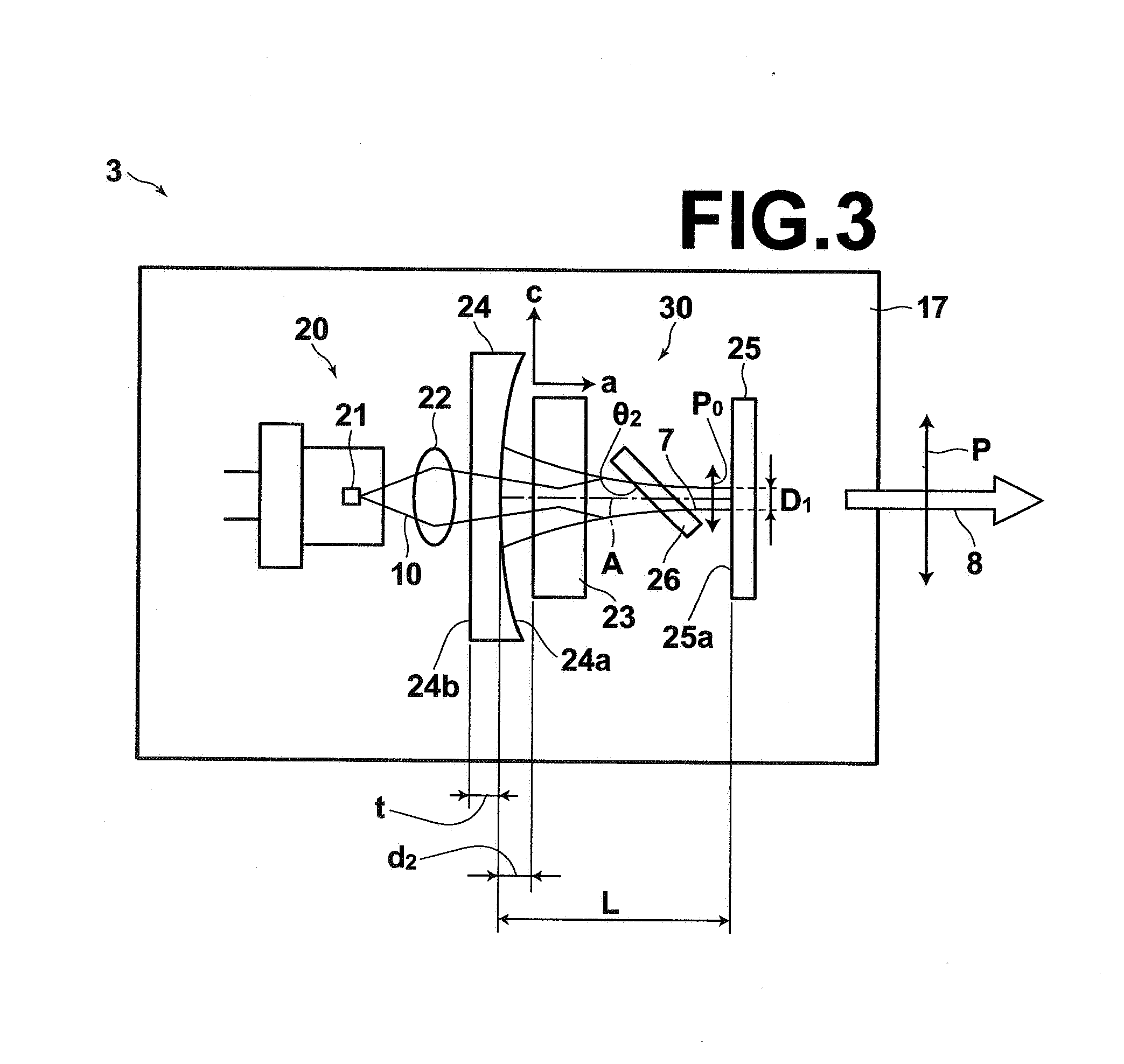Mode-locked laser device
a laser device and mode-locked technology, applied in the direction of laser details, optical resonator shape and construction, electrical equipment, etc., can solve the problems of large reabsorption loss, large device size and cost, poor stability, etc., and achieve high output stability and simple structure
- Summary
- Abstract
- Description
- Claims
- Application Information
AI Technical Summary
Benefits of technology
Problems solved by technology
Method used
Image
Examples
Embodiment Construction
[0028]Hereinafter, embodiments of the present invention will be described in detail.
[0029]FIG. 1 is a plan view showing the schematic structure of a mode-locked laser device 1 according to a first embodiment of the present invention. The mode-locked laser device 1 includes a Fabry-Perot resonator 5, a solid-state laser medium 13 disposed in the resonator 5, a mode-locking element 15, and an exciting means 6 for applying excitation light 10 to the solid-state laser medium 13. The mode-locking element 15 is a saturable absorber mirror, which forms one of the ends of the resonator 5. The other end of the resonator 5 is formed by an output concave mirror 14. The resonator 5 includes no other mirror for reflecting the lasing light than the saturable absorber mirror 15 and the output mirror 14 forming the ends of the resonator, and the resonator 5 is structured as a linear resonator.
[0030]The exciting means 6 is formed by a semiconductor laser 11 for outputting a laser beam which serves a...
PUM
 Login to View More
Login to View More Abstract
Description
Claims
Application Information
 Login to View More
Login to View More - R&D
- Intellectual Property
- Life Sciences
- Materials
- Tech Scout
- Unparalleled Data Quality
- Higher Quality Content
- 60% Fewer Hallucinations
Browse by: Latest US Patents, China's latest patents, Technical Efficacy Thesaurus, Application Domain, Technology Topic, Popular Technical Reports.
© 2025 PatSnap. All rights reserved.Legal|Privacy policy|Modern Slavery Act Transparency Statement|Sitemap|About US| Contact US: help@patsnap.com



